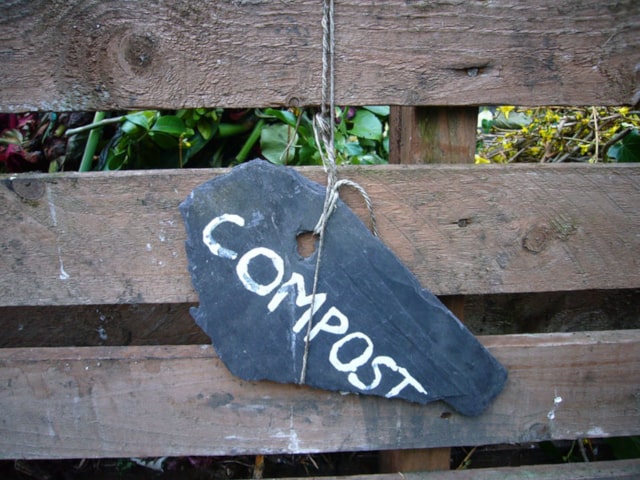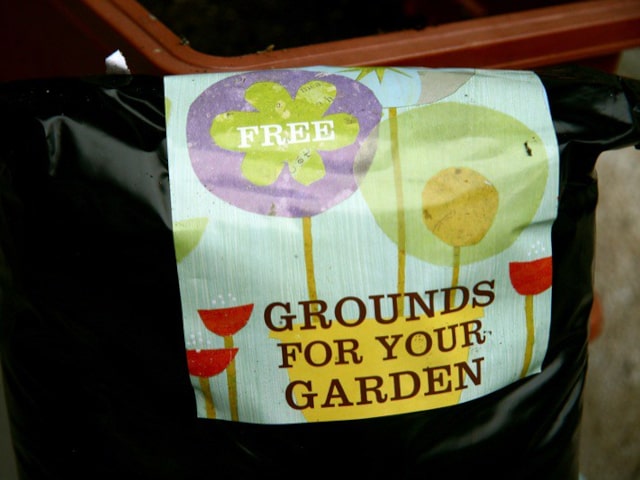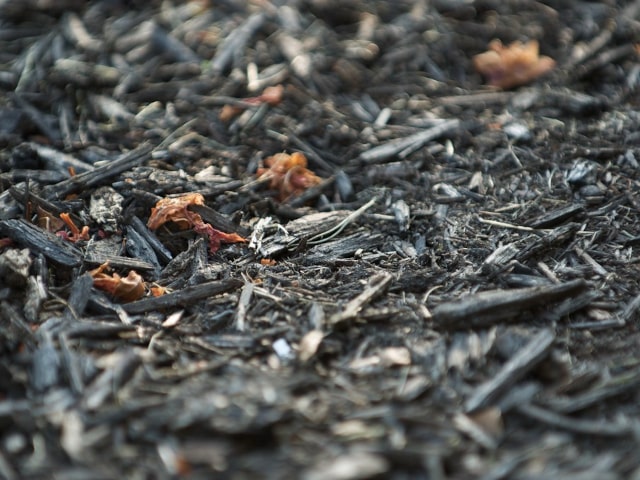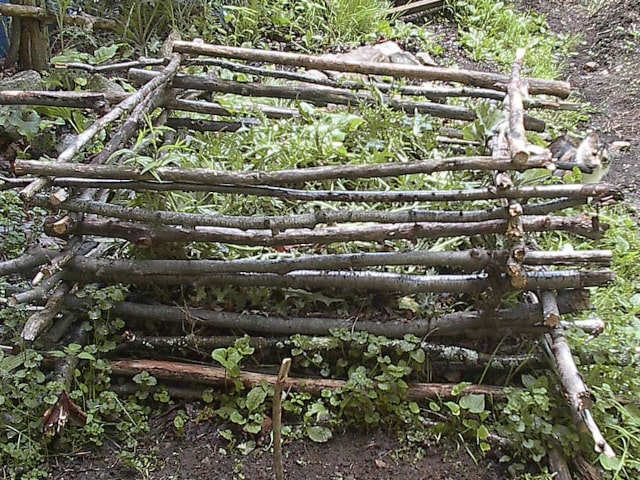
Compost is a mixture of soil, sand and humus-forming material. When you mix it, it is allowed to decompose for a certain period of time. In the process, weed seeds are destroyed and the number of friendly bacteria found in the soil increases.
You can create humus-forming material for the compost in many different ways. It may consist of animal manure, peat moss or other partially decayed material. A good compost will contain a lot of organic matter, which will help growing bacteria needed for plant food and also for aeration of the soil.
Compost is a great source of organic material in the soil and it improves soil lightness and workability. It also helps improving water retention of sandy soils and drainage in clay soils.
What Compost Is and Isn't
Compost is:
- Decayed remains of organic matter. Microorganisms will eat anything you give to them and they will turn it into a particle matter which helps plants absorb nutrients from the soil used in their growth cycle. Depending on the ingredients used to create compost, it will provide nutrients itself.
Compost isn't:
- Fertilizer. It can be used in conjunction with organic and inorganic fertilizers or soil amendments to give your plants a complete diet, but it's not fertilizer.
- Potting soil. Compost lacks enough structure to be used as a potting soil. It's also full of microorganisms that may not be good in a potted environment. However, you may use sterilized compost with other sterilized materials to make potting soil or seed starting media.
- Dirt. Just because it looks and smells like dirt (soil) it doesn't mean it's soil. Compost is organic matter. It can be added to the soil to improve it, but it's not soil (dirt) itself.
What to Compost?
In theory, you can compost any plant material or byproduct. You can also add any manure produced by a vegetarian animal. However, there are some preferences when it comes to creating compost.
It mainly consists of common plant material, such as fallen leaves, hay, straw, grass clippings, garden plants and feadheaded flowers. Another vital thing is manure. Common animal manures used to create compost are cattle, horse, chicken and rabbit. If you want to use horse manure it's important that it's throughly composted before use. If it's not composted first, weed seeds in it may germinate and spread through your garden.
There are also some things you should never use in compost, such as:
- Plastic, metal and glass. You should recycle those.
- Meat-eating animal waste (such as dog and cat waste), bones, dead animals, dairy products, meats and fats.
- Fossil fuels, paint, pesticides or harsh chemicals (such as bleach).
- Invasive and diseased plants. Never compost Poison Ivy or weeds with many seeds.
How to Make Compost
The easiest way to go is to simply make a pile of acceptable materials and have it decompose. Start with bulky limbs on the bottom so the air can glow up under the pile into it. You should layer enough brown material on the top so they can cover the limbs. Make sure it's about 6 to 8 thick. Spray this layer with water.
After this, add green materials in this 6 to 8 inches deep layer. After this, add a layer of soil. You may also add a bit of fertilizer if you want (10-10-10 works great), but this isn't mandatory. Continue layering until the bin is full or you run out of materials.
After about two weeks, the content of the bin will have settled to about half their height. This is the time to introduce more air. Don't worry about layering this time: the goal is to have good even mixture. If you have some new material, throw it in the mix. You can add table scraps to the bin: simply burry them to about 8 to 10 inches deep and cover them.
You can turn the pile as frequently as you want. It's not necessary to do it every day, but make sure it's more often than every six months. You need to give the bacteria in the pile time to heat and cool the pile. Turn it after it's cool again.
Eventually, you will notice that there is more and more decayed matter and less recognizable material. Also, the pile will stop heating up. This is the sign that the compost is ready. If you wish to have an ongoing pile, however, keep adding more greens and browns to it and sort out what you want to use when you need it.
In case the compost starts to smell, keep an eye on the green materials. Too much will be too wet and it will smell foul without the air flow. To prevent this, it's important to add more brown materials and make sure to disperse them evenly in the pile.
Another thing you can do to eliminate the smell is to turn the pile to add air. The smell is caused by anaerobic decomposition (decomposition without oxygen,
much like fermentation of yeast used in making bread). You will want aerobic decomposition, that is, decomposition with oxygen. This is why you need to turn the pile to prevent the air flow and eliminate the smell.
Making a Compost Bin: Fence
The best bins for this purpose are circular fence or silo bins. You can find them in feed and seed stores, home improvement stores, agricultural supply stores and other similar places. These stores sell various types of wire fence in rolls of different lengths. You should look for agricultural livestock fence here, not chain link fence. There is lot of it you can use to make your bins, and you can even share it with friends - several people can make compost bins out of the same roll of fence. If you share the expenses, it is not pricey and it becomes a very effective and even affordable way to make your compost bins. One word of advice: don't use chicken wire. It is too flexible and small so the compost will bulge the wire and get stuck.
To make the bin, start by cutting a 10 foot piece and make sure to leave the wire sticking out on the end so you can make a hoop with it. Carefully crimp the loose wires or use something (such as tie wraps) to bind the ends together. By doing this, you will get a 3 foot diameter hoop ideal for making your compost.
Making a Compost Bin: Pallets
Another way to go when making your compost bin is to use pallets. They are cheap, even free in many cases. They are excellent for your first bin, when you're only testing to see what composting is like and if you seriously want to do it. Pallets will rot and attract termites eventually, and they don't look great, but they give you a good chance to experience composting without too much investment and they will help you see if composting is for you or not.
If using pallet bins, have at least two of them, side by side. To make them, use a total of five pallets. Make a three-wall structure and then finally add a back and side walls using one pallet as a center dividing wall. Why do you need two bins side by side? Because you'll make the pile in one bin and when it's time to turn it, you will toss it into the other bin. If you are really serious about this, you may even add a third bin to help you with turning the pile.
Making a Compost Bin: Barrels
If your yard is very small and if all you want is to make a little compost without much time and effort, use barrels and tumblers as your compost bins. The most expensive option is to use commercial products specially made for composting, such as ComposTumbler. If you want to save some money, any old barrel with a plastic or a metal cap will do. Simply drill a bunch of 0.5 inch holes in the barrel and stand it on its end. Fill it and cap it. Once per day or so, knock it over and push it around, and water it once in a while. Your compost will be finished in a few weeks or months.
You can make a good barrel from a trashcan. If you take one on wheels, it's even better - this way, you will be able to wheel the finished compost to the garden or potting shed quickly and without much effort.
Is a Bin Truly Necessary?
No, a bin is not necessary: you can make compost without it. It's a matter of a personal preference, and people who use bins feel it's more practical this way. Bins will keep all the contents together even when the wind blows. Also, bins look nicer than piles of dead leaves and grass. Depending on the type, bins can help you keep rodents and other animals out. However, if you have enough room in your yard and you don't mind some loose leaves blowing, it's not really necessary to use a bin.
Where to Place the Compost?
It depends on your property. You wish to keep your compost bin near your house and garden to be easily reachable and that you will actually use it. On the other hand, you don't want it to be too close to your house to be an eyesore or that you have to smell it all the time.
Whatever you choose as the best spot, keep in mind that you can compost either in full sun or full shade. Full sun will dry the pile out faster, so you need to make sure it's watered regularly. If you choose to compost in full shade, it will not dry out easily, but you'll need to ensure a better air circulation, which means you will have to turn the pile more often.
How to Use Compost
Compost can be used in many different ways. Here are some of the popular ideas:
- Soil amendment. Soils can benefit from extra organic matter. This is why you should add compost to it. You can either fill it in or use compost as a top dressing. It will provide nutrients and tilth to the soil. If the compost is not properly finished it will provide more drainage to compacted soils: bigger particles ensure better drainage. Remember: any compost is better than no compost at all.
- Mulch. You can use compost to mulch around the plants. This is particularly useful if you don't have much compost to begin with. You may use incomplete compost as mulch and it will work great that way.
- Compost tea. You can use compost to make tea for your plants. Take a handful of finished compost, put it in a leg of panty hose or in a sock and soak it in a bucket of water. Leave overnight or for a couple of days. Use this water for your house plants or other potted plants. This compost tea is also good for watering special garden plants. The stronger you make it, the more nutritive value it will have, but you don't have to worry about proportions.
Basic Lingo
Finally, here is the basic terminology you should know if you want to make your own compost. Believe it or not, compost has its own lingo, so here are some basic definitions to help you:
- Brown: Brown materials are those rich in carbon and they provide great food for microorganisms. The most common examples of brown materials are hay, straw or fallen leaves.
- Green: Green materials are rich in nitrogen and they provide food for microorganisms that break down the materials. Some of the most popular green materials are grass clippings and chicken manure.
- Heap: Pile of contents you're composting, in or out of the bin.
- Finished: state of compost when none of the original contents of the pile are recognizable. It will resemble a bunch of soft, brown dirt, resembling coffee grounds.
- Cold Temperature: a method of slow composting. With this method, you pile your materials and simply let them set until you're ready to use them. There is no turning needed. The method is called "cold" because the pile is not made to routinely heat up much. This method may seem simple, but it usually takes years before the compost is finished. This is why most cold piles are used in an unfinished state.
- Hot: a compost pile will heat and cool as microorganisms break down the materials. As they eat, the pile may get as hot as 160 degrees F. The more nitrogen there is in the materials, the hotter the pile can get. The hottest manure out there is chicken manure.
- Tilth: workability of the soil. More tilth is better, so this is one of the main reasons why it's advisable to use more organic matter.
Photo credit: Tony Buser




1 Comments
Me and husband made compost for our veggies and house plants some years past and it did great results and harvests.